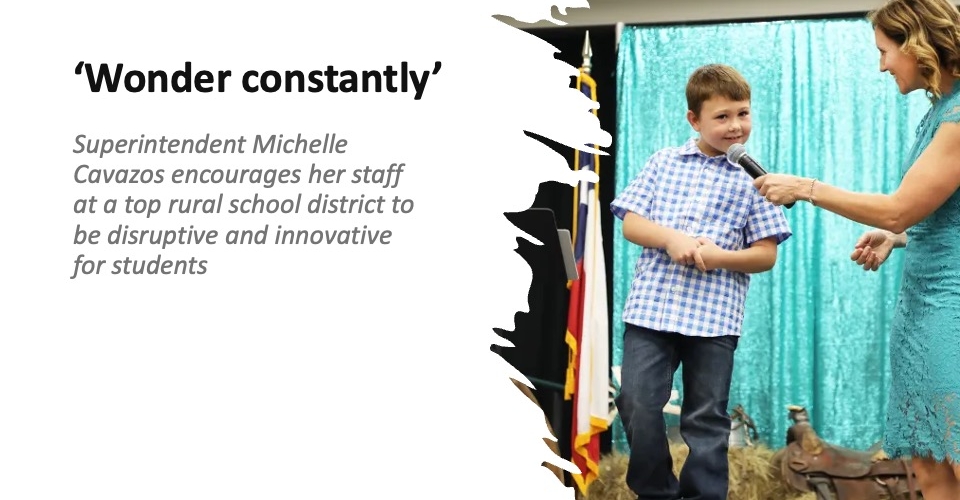Around 70% of educators have reported an uptick in student misbehavior since 2019, and one in three educators describe their students as unmotivated and disengaged. Misbehavior stunts the progress of the students acting out and the progress of their peers, creating a school culture that does not align with best practices for student wellbeing. Clearly, this can’t go on. So what do we do next?
As a character development expert and educator for more than 25 years, I can attest to the profound positive changes I see in students every day when they are supported with the right character development frameworks. A robust body of research indicates that character education is an effective tool for reducing the incidence of misbehavior by students, with meta-analyses showing that it promotes better education outcomes and higher levels of integrity, compassion, self-discipline and other positive, pro-social traits.
Over the years, through collaborations with other leaders in the field of character development in school and sports, such as Dr. Marvin Berkowitz, Dr. Mindy Bier and Dr. David Shields, my approach to character education has solidified around two essential pieces: the “being” of character (i.e., modeling good behavior for students) and the “doing” of character (i.e., explicit intentional work with students to cultivate their own character).
The “being” of character
Middle and high school are some of the most formative years in the lives of young people. And aside from parents, school educators—including teachers and coaches—have the most lasting impact on the holistic development of our youth. Being the best versions of themselves as role models gives students indisputable evidence of the value of high character in the real world.
Centering through PRIMED
One way educators might apply the “being” of character is with the PRIMED for Character Development model. This framework was intended as a daily self-assessment tool for educators who want to show up as their best self for their students, requiring only a few minutes of preparation and reflection each day. PRIMED emphasizes six key principles:
- Purpose and Prioritization: Why are you working to be your best for students? What will the outcome be years from now?
- Relationships: “Kids don’t care what you know until they know that you care.” How are you cultivating relationships with students?
- Intrinsic Motivation: Educators need reasons to commit to high-character behavior beyond external rewards or punishments—these won’t be enough to carry them through all the tough moments in school. What are your motivators?
- Modeling: Are you able to demonstrate the behaviors you want to see in students?
- Empowerment: Are you giving students opportunities to lead, so they can apply what they’ve learned on their own initiative?
- Development (Long-Term): Are we, as educators, just hoping to get through the day, or are we committed to long-term development of our students?
‘Talking Out of School’ podcast: Why the Universal Design for Learning is so powerful
Again and again, I’ve heard from teachers and athletic directors how powerful PRIMED has been and how it has helped them center what is most important for long-term character development.
The “doing” of character
Modeling goodness for students is essential for them to find relevance in the real-world value of character development programs, but it’s not sufficient. They also need to practice positive character themselves. At IMG Academy, we rely on research-backed programs to shape this component of character education for students, programs that educators could adapt to their own needs and schools.
Growing through the 12 CViL Virtues
The Cultivating Virtues in Leaders (CViL) framework emphasizes 12 interconnected values contributing to the positive character changes we seek to see in students. There is ample research that increasing students’ understanding, sophistication and growth in these virtues also leads to greater success and fulfillment in youth into adulthood. In practice, educators can promote these virtues through intentional programming designed to help students embrace a growth mindset toward each of these virtues.
- Purpose
- Integrity
- Gratitude
- Courage and Communication
- Joy and Balance
- Compassion
- Humility
- Forgiveness
- Empowerment
- Embracing Diversity
- Foresight
- Service and Legacy
By scheduling around the estimated 24 bi-weekly “advisory” sessions each school year, educators committed to building stronger character in their students can focus on each of the 12 CViL virtues for two weeks. I recommend an array of delivery mechanisms for the 12 virtues to introduce, deepen understanding of, and bring relevance to each.
In practice, this could mean incorporating video clips, student partner sharing, ethical scenarios, cross-aged group mentoring and community service projects in advisory lesson planning. Remember, make the framework your own based on your school’s values and the needs of your students and lean on the six key principles in PRIMED to support student growth.
The years ahead
By reframing character education through the lenses of ‘being’ and ‘doing’, school administrators can partner with educators to curb the rising rates of misbehavior in classrooms and, at the same time, cultivate virtues and character strengths in their students, as well as a thriving school culture. This supports a wider endeavor to promote goodness in society and secure the well-being of the next generation of innovators, leaders, and citizens.



